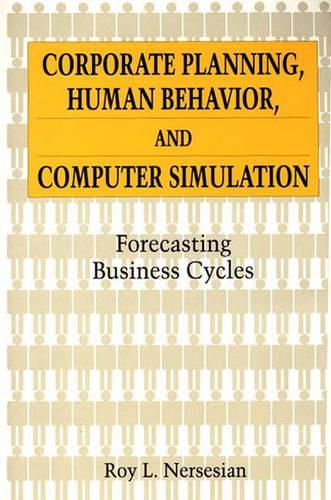
Corporate Planning, Human Behavior, and Computer Simulation: Forecasting Business Cycles
(Hardback)
Publishing Details
Corporate Planning, Human Behavior, and Computer Simulation: Forecasting Business Cycles
By (Author) Roy Nersesian
Bloomsbury Publishing PLC
Praeger Publishers Inc
15th February 1990
United States
Classifications
Tertiary Education
Non Fiction
Corporate finance
658.403
Physical Properties
Hardback
249
Description
Roy L.Nersesian challenges traditional forecasting methods that rely strictly on econometric models, arguing that they ignore a fundamental aspect of the business cycle - human emotional responses to economic stimuli. Nersesian advocates instead the development of forecasting models that incorporate human behaviour into the process, and he provides a tool - computer simulation - which can be used for this purpose. As Nersesian demonstrates, such consumer attitudes as confidence in the future, fear of depression, even passing fads can have a profound effect on business activity and are often far more predictive of the future than are the thousands of mathematical equations used to develop a forecast built upon econometrics. By using simulation to factor potential consumer responses into the forecasting process, Nersesian is able to tie forecasting to the consequences of human behaviour and thereby determine the way in which attitudes play a role in affecting the future course of business.
Reviews
"[Corporate Planning, Human Behavior, and Computer Simulation] marks a dramatic difference from the leaden prose and unimaginative expositions that characterize the usual textbook. The analyses are beautifully developed, and clever as well."-Guy Oakes Kvernland Professor of Philosophy and Social Policy Monmouth College
Introduction to computer simulation in business planning. Each chapter acts as a case study of simulation, focusing on a situation which a planner might face. Well-documented BASIC programs are included for each case study.-Computer Book Review
The author advocates forecasting models that incorporate human behavior into the forecasting process. By using simulation to factor potential consumer responses into the forecasting process, Nersesian ties forecasting to the consequences of human behavior. His work shows that forecasts that account for consumer attitudes such as confidence in the future, fear of a depression, and passing fads can often predict the future more accurately than those built solely on econometrics. The study is organized around a series of questions about the business cycle. To address the questions, Nersesian creates a simple island society and demonstrates how to use simulation to assess the effects of elements that might cause a change of consumer sentiment during the forecast period.-Business Information Alert
"Introduction to computer simulation in business planning. Each chapter acts as a case study of simulation, focusing on a situation which a planner might face. Well-documented BASIC programs are included for each case study."-Computer Book Review
"The author advocates forecasting models that incorporate human behavior into the forecasting process. By using simulation to factor potential consumer responses into the forecasting process, Nersesian ties forecasting to the consequences of human behavior. His work shows that forecasts that account for consumer attitudes such as confidence in the future, fear of a depression, and passing fads can often predict the future more accurately than those built solely on econometrics. The study is organized around a series of questions about the business cycle. To address the questions, Nersesian creates a simple island society and demonstrates how to use simulation to assess the effects of elements that might cause a change of consumer sentiment during the forecast period."-Business Information Alert
Author Bio
ROY L. NERSESIAN is Chair of the Management Department at the School of Business Administration, Monmouth College. He is the author of Computer Simulation in Business Decision Making also published by Quorum Books.
